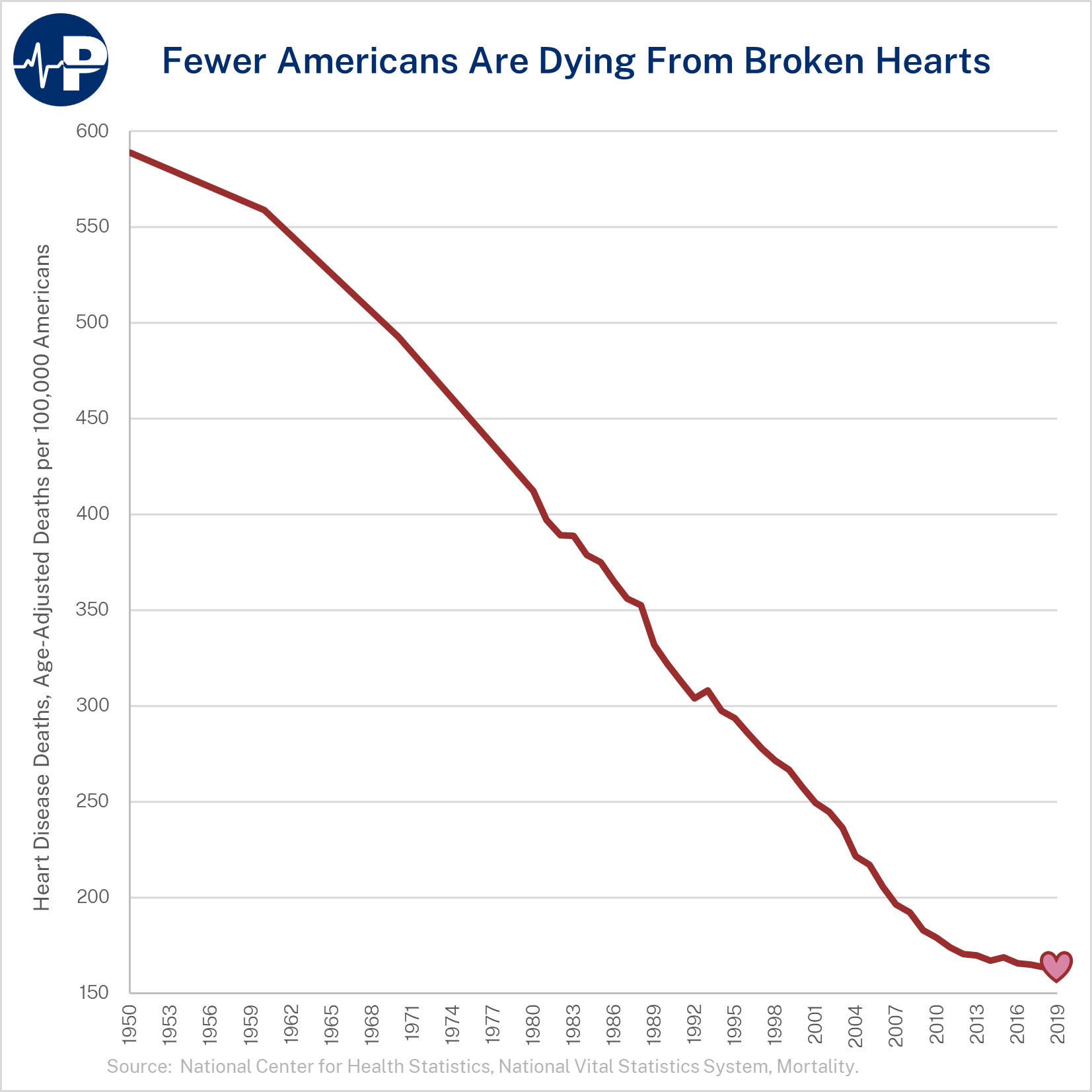On Valentine’s Day, this week’s Paragon Pic gushes over one of the greatest advancements in America’s health history. As the figure below shows, U.S. heart disease death rates have fallen dramatically, from 589 deaths per 100,000 in 1950 to 162 deaths per 100,000 in 2019—a stunning 72.6 percent drop.
Much of this decline is from advances in medical treatment and prevention. In 1960, the first bypass surgery was performed. In 1977, the first coronary angioplasty to open narrowed or blocked coronary arteries was performed. In 1988, the first coronary stent was used, improving the angioplasty procedure’s durability. Drugs, such as statins to lower cholesterol and angiotensin-converting enzyme inhibitors and calcium channel blockers to treat hypertension, entered the market. These innovations occurred alongside a precipitous drop in Americans smoking, which significantly improved health.
In a 2019 paper in Health Affairs, economist David Cutler and coauthors highlighted that this trend resulted in reduced spending growth for those in Medicare — a reduction of $1,629 per person — for cardiovascular diseases which includes heart disease and cerebrovascular diseases that share the same risk factors. Cutler et al. attributes about half of this spending slowdown to the increased use of medications to treat and control the three major risk factors for cardiovascular disease: hypertension, high cholesterol, and diabetes.
Of course, the societal benefits vastly exceed the savings to Medicare. Studies show that while half the deaths prevented can be attributed to disease treatments and half to preventive strategies that reduce risk factor levels, changing risk factors actually adds 65 percent to a different metric, “life-years-gained.” That is because avoiding deaths in people younger than 65 adds more life years than avoiding deaths in older people.



